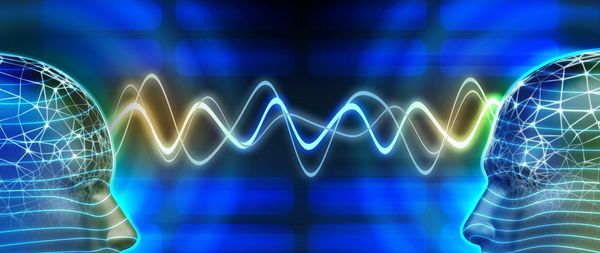Jon Brooks • • 5 min read
The No Bullshit Guide to Speed Reading: 1 Technique That Actually Works

“I cannot remember the books I’ve read any more than the meals I have eaten; even so, they have made me.”
― Ralph Waldo Emerson
Do you want to read MORE books in LESS time without losing any comprehension?
Well, I’ve extrapolated a method taken from a scientific paper on ‘Physical Text Layout’ to show you just how to do that.
And the best thing is…
…all that’s required on your part is a simple adjustment to your e-reading device, smart phone or computer.
(And reading the rest of this article of course.)
But before we get to this method lets take a quick look at the two most popular speed reading strategies.
Are they any good?
Conventional Speed Reading Strategies
Speed reading techniques work by training you to eliminate subvocalisation and to chunk words into groups.
In layman’s terms this just means suppressing your inner reading voice so that you can interpret words as pictures, or visual symbols.
The theory goes, if you get really good at this you can end up turning not just words into symbols but whole paragraphs.
“The man walked down the street and bumped into a green lamppost” is no longer read word by word, but instantly recognised as an image in one’s mind.
It’s a nice idea but there are a few problems with this speed reading strategy.
Firstly, Spoken language existed long before written language. Not only is it evolutionarily backwards to try to suppress the tendency to subvocalise, it’s impossible.
Subvocalisation can always be detected in the vocal chords of even the best speed readers via subvocal recognition analysis.
Secondly, competent readers tend to chunk naturally any way. We very rarely sound out each ‘the, and, a, when’ and simple descriptions such as ‘black cat’ are easy to visualise without sounding out each word.
Thirdly, comprehension rates are always lower in speed readers than in regular readers. At best, experts say speed reading a just a methodical way of skimming.
I can speed read, I’ve read all the best books on the subject, and bought the software too. It is useful to be able to skim articles and academic papers, but I only use it as a means to find the bits I want to actually read, properly.
For writers in particular, speed reading is a bad idea. You ought to take in language the same way you express it, and everybody subvocalises when they write. Speed reading literature is like watching great TV at 2X speed. Not something I recommend.
Read: The 10% Rule How to Read More than 42+ Books Per Year
Photoreading Strategies
Photoreading is easy.
All you have to do is flick through a book while staring rapidly down the centre of each page. This allows your unconscious mind to absorb the information so that it can be recalled at a later date.
Photoreading allows you to take in information at 25,000 words per minute. Or as photoreading enthusiasts like to say “the speed at which our brains think”.
Always remember: if it sounds to good to be true, it usually is.
The super smart scientists at NASA conducted an in-depth study on photo reading and concluded:
“These results clearly indicate that there is no benefit to using the PhotoReading technique. The extremely rapid reading rates claimed by PhotoReaders were not observed; indeed the reading rates were generally comparable to those for normal reading.”
Well known personal-development gurus Paul Scheele, and Steve Pavlina are big fans of this technique, and so are their bank accounts no doubt.
But I digress,now for the main event…
How To Actually Speed Read… Without Gimmicks
There is a way of reading substantially faster without conventional speed reading gimmicks and unreasonable course fees. This method is based on science and can be used instantly, without any training.
As far as I know, this method hasn’t been mentioned anywhere else. I stumbled on it by chance when I was reading (slowly) some studies.
Here it is:
In Mary C. Dyson’s academic article “How Physical Text Layout Affects Reading From the Screen” she states:The results confirmed the Kolers et al. (1981) study that smaller characters, with more characters per line, are read faster. The two-thirds and full screen widths were also read faster than the one-third. Combining the two densities, a positive correlation indicated that the more characters per line, the faster the reading rate [my highlight]. There were no differences in comprehension.
Full PDF text can be read here.
For anyone using an Amazon Kindle or any kind of e-reading device, this study is good news. Unlike a hard copy book, ebooks have customisable text features.
The ideal line length for optimal speed reading, Dyson said, is 100 characters per line.
To achieve this on your Amazon Kindle Simply press the ‘Aa Tab’ and alter the settings to exactly what is shown below:
horizontally
. The characters work out at about 80 per line, any more than that and the text became too small for my liking.*For newer versions of the kindle such as the Paperwhite and touch screen versions, or other e-reading devices, use the above settings as a guide and just count manually until you get 80 – 100 characters per line. You’ll get the exact same benefits.
This subtle hack for reading isn’t going to ‘quadruple your reading speed’ as the photo reading advertisements promise, but used constantly over a long period of time it can have a dramatic effect.
Even if a single book takes you 45 – 90 minutes less to read, that could easily add 10 – 20 EXTRA books per year and you won’t even be doing anything different!
So that’s it. Happy reading! If you don’t have anything to read at the moment, here are my all time top 10 books.
P.S. The new Kindle Voyage is the most interactive, high-resolution kindle to date. It comes with word wise to help you learn new complicated words but the techniques in this article will work for ANY e-book as long as you can adjust the text settings.
This post was originally published on ComfortPit.com

Jon Brooks
Jon Brooks is a Stoicism teacher and, crucially, practitioner. His Stoic meditations have accumulated thousands of listens, and he has created his own Stoic training program for modern-day Stoics.










